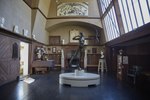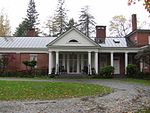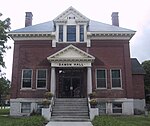Plainfield, New Hampshire
New Hampshire populated places on the Connecticut RiverPlainfield, New HampshireTowns in New HampshireTowns in Sullivan County, New HampshireUse mdy dates from July 2023

Plainfield is a town in Sullivan County, New Hampshire, United States. At the time of the 2020 census, the town had a population of 2,459. The town is home to the Helen Woodruff Smith Bird Sanctuary and Annie Duncan State Forest. The village of Plainfield, where 178 people resided at the 2020 census, is defined as the Plainfield census-designated place (CDP) and is located in the western part of the town along New Hampshire Route 12A. Plainfield also includes the village of Meriden, home to Kimball Union Academy, a private preparatory school.
Excerpt from the Wikipedia article Plainfield, New Hampshire (License: CC BY-SA 3.0, Authors, Images).Plainfield, New Hampshire
Route 12A,
Geographical coordinates (GPS) Address Website Nearby Places Show on map
Geographical coordinates (GPS)
| Latitude | Longitude |
|---|---|
| N 43.534166666667 ° | E -72.356111111111 ° |
Address
Plainfield Community Baptist Church
Route 12A 1094
03781
New Hampshire, United States
Open on Google Maps









